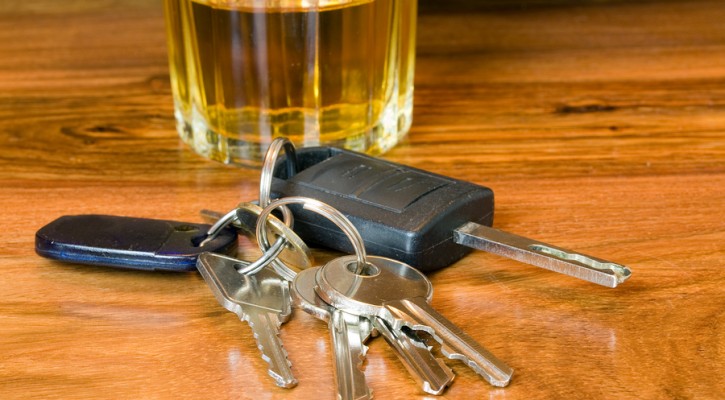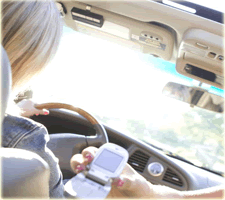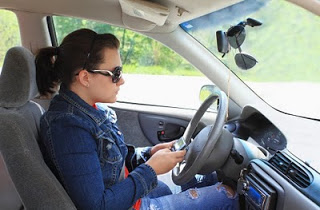Search results for "apps"

Preventing Underage Drinking and Driving
November 22, 2010
Underage drinking should and does pose concern for parents. Combine drinking with teens who are receiving their learner’s permits or full operators license and you have a recipe for disaster.
For parents and guardians, it will be up to them to make sure that they set the parameters and guidelines to keep their teens safe at all times. But doing so without imposing too much control and giving away too much freedom is essential. Otherwise, teens may make the wrong choices when faced with decisions, they may soon regret.
So what can be done? What can be done to help a teen from getting into preventable bad situations?
There are a few steps parents can take, including:
Get to know the parents of the teen’s friends – Acquaint yourself with the parents of your teen’s friends. Make sure you are on the same wavelength when it comes to what your expectations and parameters are for your teen. Also, treating your teen’s friends with respect or as if they are family will make them think twice before trying something irresponsible. If another parent isn’t too concerned about underage drinking, put out facts. Never argue, instead, share your concerns and the reason you have them, along with the facts and statistics on underage drinking and how it affects the teenage brain. Once they understand the science and statistics, hopefully they will change their minds.
Hide/Lock up the alcohol – Remember, out of sight, out of mind. Don’t make it easy for them to find alcohol and be irresponsible. Ask the parents of your teen’s friends to do the same. Homeowners and other adults can be held liable for what occurs in their home whether they were present or not. Be prudent and not an enabler for reckless teen behavior.
Be the example for them to follow – Be consistent in your message. Never break the rules you make or take part in illegal, unhealthy or dangerous substances or activities. Your actions are the most powerful message to your teen of what is acceptable in your family.
Limit teen driving times and vehicle access – Create and follow a parent-teen contract. Give them limits as to when they can drive a vehicle and how often they can use it. Check in often with your teen. Be sure you know how to reach them. Know where they’re going and ask whether anyone will have alcohol and if adults will be present.
Support the law – Most of the underage drinking laws have made bars and liquor establishments responsible for whatever damages an underage customer might do or incur. They are also likely to have their licenses for selling revoked, if proven to be selling to minors or someone with fake ids. Law enforcement is also cracking down on the makers of fake ids, and violators are given harsh penalties if proven guilty.
Install an anti-distracted driving mobile application – Most of these apps are designed to combat distracted driving, but they can also be used to set safe driving zones, and can alert you if a teen is going over a certain pre-approved point, like, say, a bar or known trouble area. It could also help prevent your teen from getting into a distracted driving crash.
Talk to your teen – Have a straight-up conversation about the effects of drinking and the dangers of drinking and driving. Make sure they understand the penalties, how it reflects on their legal and driving records and how that might affect them in the future. Tell them of your family’s history of alcohol and drug use, since there is a genetic predisposition towards risk of addiction. Be alert and ready to talk with your teen, when they come in at night. Ask them about how their evening went and be prepared to tackle what they share with you. Having an open conversation and understanding with teens can often do wonders for both the teen’s safety and their relationship with their parents.
Recognize and praise them when they have been responsible and demonstrated good judgment. Together with other concerned parents, many crashes that happen during the teenage years can be prevented. Be concerned and vigilant, but not overprotective. Teen drivers may seem like they are maturing to adulthood, but they are not quite there. Balancing expectations with responsibility and implementing precautions, will help to avoid the dangers of underage drinking and drinking and driving.
Learn more about Technology to Prevent Drunk Driving at the National Safety Commission.

What is being done to Stop Distracted Driving?
October 12, 2010
Each day there is more research conducted, articles written and information available about the dangers of distracted driving. This increase in awareness is highlighting the growing problem all drivers face on the roadways. Distracted driving has been estimated to cause over 11,500 deaths in the last two years. But what has been done to eliminate the problem? What initiatives are organizations and individuals doing to combat distracted driving?
Forming Organizations
When you Google “distracted driving groups” you will find varied results of individuals banding together to increase awareness on distracted driving, on a local or country-wide basis. The organizations can be as simple as asking people to pledge against distracted driving, like Oprah’s No Phone Zone, or wearing thumb socks to show a driver’s support for not texting while driving. These groups establish their presence online, in various social networking services, making it easier to distribute the message.
Enacting Laws
With the nationwide awareness on the shocking statistics of texting while driving, the Federal, state and local governments and municipalities have proposed and enacted laws to prohibit cell phone usage while on the road. So far, more than 30 states have a law that places a ban on texting while behind the wheel, urging drivers to think twice before they pull out their phones. The type of penalties and amount of fines range from location to location. Currently, the options are being weighed on how to effectively further enforce texting ban laws.
Phone/Text-blocker apps
How to stop phone use while on the road? Simple. Install a phone/text-blocker application. These applications interface the cell phone to the vehicle’s Global Positioning System (GPS) to see if the car is in motion. If so, the application disables the cell phone’s call and/or texting features. With crash-risk increasing four times/talking on the phone and 23 times/texting, it can help discipline the driver into not relying on their phones so much while on the road, until they break the habit.
Mock Crashes
Several local/teen driving advocacy groups have set up mock crashes to remind teen drivers (the group most likely to engage in texting while driving) what could potentially happen if they text and drive at the same time. In most places, the mock crashes are set up at the entrance of the school depicting the wrecked cars, actors as teen drivers, playing dead with phone in-hand. It is a shocking, yet accurate statement that reminds teen drivers of the potential consequences.
Trial Runs
There are also trial course runs, usually hosted by a state’s Division of Motor Vehicles along with several advocates against distracted driving. They allow drivers to experience firsthand what could happen should they attempt to text while driving. Set in an enclosed space, with only traffic cones as obstacles and are operated at low speeds. These courses are designed to show drivers that they are unable to handle both tasks, by challenging them to maneuver their vehicle safety and skillfully while driving distracted.
Advertising and Videos
Various organizations release ads that are either funny or serious in order to make their point. Some organizations do their advertisements a step above by involving the people themselves. They create contests asking drivers if they have what it takes to get the message across, in a video format. The advantages of these types of contests include maintaining a limited budget, creating enthusiasm, spurring creativity and raising safety awareness in teen drivers.
People are motivated to change their behavior in different ways. One or all of these approaches can be incorporated to stop distracted driving. Take a proactive approach to know the dangers and help stop distracted driving.

Measures Taken to Stop Distracted Driving
May 5, 2010
Each day, as it seems, more and more information about the dangers of distracted driving comes out — which increases the awareness of drivers about the growing problem. But what has been done? What exactly are organizations and individuals doing to combat distracted driving?
Forming Organizations
When you Google “distracted driving groups” it will yield several results — of individuals banding together, increasing awareness on distracted driving, on a local or country-wide basis. These can be as simple as asking people to pledge against distracted driving, like Oprah’s No Phone Zone, or wearing thumb socks to show a driver’s support for not texting while driving. These groups establish their presence online, in various social networking services, making it easier for their targets to get the message.
Enacting Laws
With the nationwide awareness on the shocking statistics of texting while driving, local governments have acted to put in motion laws that would prohibit cell phone usage while on the road. So far, more than 30 states have a law that places a ban on texting while behind the wheel, urging drivers to think twice before they pull out their phones, unless they want a penalty. For now, the options are being weighed on how to effectively enforce texting ban laws — but public support usually wins, and a law is enacted.
Phone/Text-blocker apps
Stopping phone use while on the road? Simple. Install a phone/text-blocker app. These applications interface the phone to the car’s GPS and if it sees that the car is in motion, the app disables the phone’s features. With crash-risk increasing 4 times/talking on the phone and 23 times/texting — it may help discipline the driver into not relying on their phones so much while on the road, until hopefully, they won’t have a need for such an application anymore. Learn more about apps like this including http://www.Textecution.com/.
Mock Crashes
Several local/teen driving advocacy groups have set up mock crashes to remind teen drivers (the group who are most likely to engage in texting while driving) what could potentially happen if they text and drive at the same time. In most places, the mock crashes are set up in a way that, the first things that teens going to school are going to see are wrecked cars, teen-drivers-playing-dead-with-phone-in-hand and lots of fake blood. It is a shocking, yet accurate statement that would inform teen drivers of the potential consequences.
Trial Runs
There are also trial runs — usually hosted by a state’s DMV along with several advocates against distracted driving — they allow drivers to experience firsthand what could happen should they attempt to text while driving. Set in an enclosed space, with only traffic cones as obstacles, there are only a few who manage to get through the course without hitting any of the cones while texting/driving. There are drivers who believe they are perfectly capable of handling both tasks, but running through a trial distracted driving course more or less proves them otherwise.
Ads
Various organizations would release ads that are either funny or serious in order to make their point. Some organizations do their advertisements a step above by involving the people themselves — they create contests asking drivers if they have what it takes to get the message across, in video form. Which is a good thing — it awakens an enthusiasm and awareness in teen drivers — which makes them think about safety when driving.
Distracted Driving Courses
The addition of cell phones, texting and driving, in-vehicle video entertainment, and navigation systems lengthens the long list of driver distractions. Research reveals that many new drivers do not recognize the risk of these activities when driving. To make teen drivers more aware of the risks there are courses like Dangers of Distracted Driving. The course creates a clear understanding of the distractions while driving and how they can cause crashes and cost lives.
